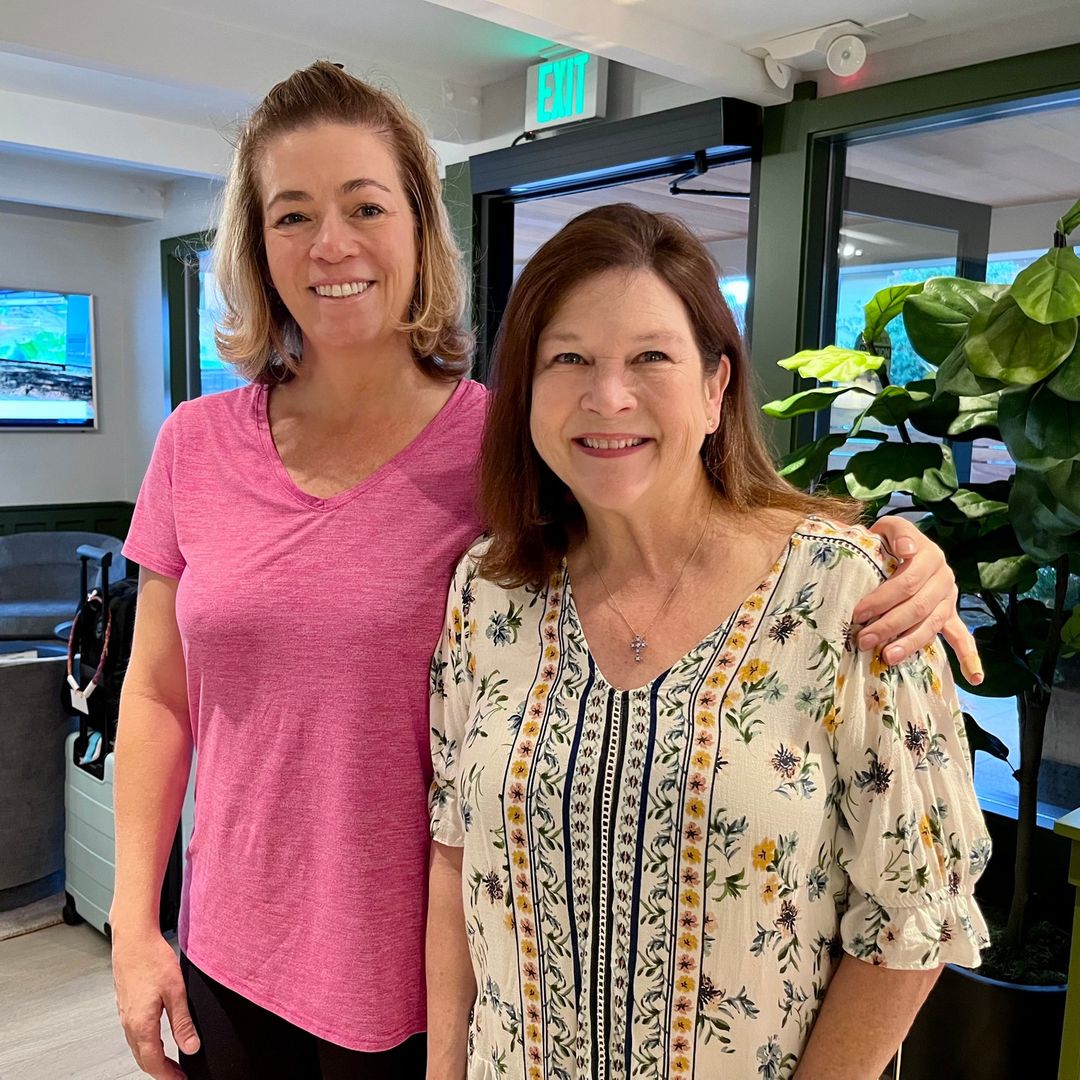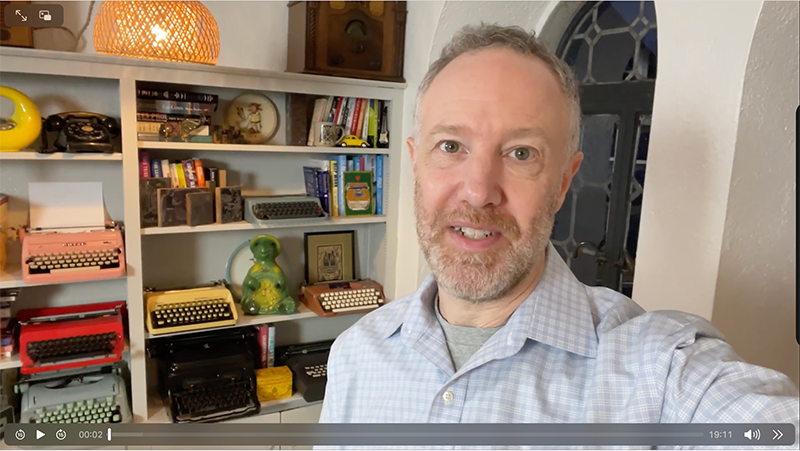There is a scene in the movie The Social Network, where Mark Zuckerberg is being sued and is attending a deposition. The opposing attorney notices that Mark seems distracted, and this is the interaction:
Attorney: “Mr. Zuckerberg, do I have your full attention?”
Mark (with a tone of exasperation): “No.”
The attorney: “Do you think I deserve your full attention?”
Mark: “You have part of my attention. You have the minimum amount.”
If you are a writer or creator sharing online, I am going to bet that you have felt this way before. That here you are sharing something important and…. if people notice it at all, they seem to give it the minimum amount of attention. It may look something like this on social media:
- You have followers, but no one engages. No likes, comments, reshares.
- Someone does see your post while scrolling, and clicks ‘like’ after a millisecond, then keeps scrolling.
- You have followers, but when you look at the metrics, you feel that the algorithm of the social network isn’t actually showing your posts to these followers.
This can also play itself out in other ways. For me, I spent 15 years sharing 31,000 posts on Twitter, amassing lots of followers and engagement. But then someone new bought it, the network changed, and my core audience left.
Another way this can happen is what happened to a writer I work with: after years of developing a following on Facebook, one day her account disappeared. Somehow it got flagged for doing something that went against their terms of service (which she never did), and they deleted it with no possible recourse to bring it back. Thousands of followers and interactions gone in an instant.
I often write about what I call Human-Centered Marketing, and how you as a writer can feel good about sharing what you create and engaging with your audience in meaningful ways. But too often, we get sidetracked by metrics that don’t matter, such as the number of followers, or likes, or views.
Why could these numbers not matter? I mean, isn’t 10,000 followers better than 100 followers? Better because it means more people may see what you share, like what you share, and fuel word-of-mouth marketing for your work? Sure, that is definitely possible. What is also possible though is that a writer spends energy in these places, only to realize:“My books aren’t selling, people aren’t showing up to my events, I’m not getting reviews, and no one seems to care.”
Reminder: Join me for my new workshop: Find the Readers Who Will Love Your Substack!Understand who your ideal readers are, where to find them, and how to convert them into subscribers on your Substack. The live event is Friday January 19, 2024, at 12:30pm ET. A full recording is provided to all who register. Register Here!
I have spoken to so many writers over the years who tell me that even though they have thousands of subscribers — or in some cases tens or hundreds of thousands of subscribers — they have no idea who their audience really is. Or in some cases, they feel like they have the “wrong audience,” one that expects something from them that they no longer want to create. And they are paralyzed in this place where they are afraid to change for fear of disappointing this audience they don’t really know.
Suddenly, 10,000 followers doesn’t indicate the validation and connection we hope it does, but rather, a faceless mass of confusing expectations.
When someone subscribes to your email newsletter, they aren’t just a number on a list. They are someone who is showing up to embrace what you share each week. I want you to feel empowered to understand the process of encouraging people to truly engage with what you write and why.
What is the opposite of getting minimum attention? Something like this:
- When you have a group — even a small group — of people who truly love what you create. An easy way to think of this is the top 10% of your supporters. So, if you have 100 subscribers or followers, maybe 10 who really show up for all that you do. Having 10 people who support you that manner can truly change your life in profoundly good ways.
- Having consistent access to your biggest supporters. This is part of why I have always appreciated email newsletters, because I have permission to email them, as well as a consistent way to do so via their email address. This is something I didn’t have when my audience left Twitter. I could encourage them to follow me elsewhere, but no persistent way to connect with each of them unless they took an action to sign up for my list or engage with me elsewhere.
- When these people take actions to support you in the ways that mean the most to you. Perhaps that is buying your book, or posting a review for it when it releases, recommending your book to a local book club, subscribing to your paid newsletter, taking a course from you, recommending you as a guest on a podcast, or something else that you truly value.
In sales, there is this term: “conversion.” Often, it is meant to represent when someone goes from potentially buying what you offer, to actually purchasing it. They “converted” from a prospect to a customer, in sales lingo.
Conversion isn’t just a number. It can also be a meaningful experience between people. Let me show you an example of full attention and deep engagement. This is Teri Case and Cathey Nickell:

Teri published a new novel this week, Finding Imogene, and Cathey is a children’s book author. They met around 2016 in a mastermind group I ran for writers. They stayed in touch, becoming friends. The photo above is their first in-person meeting last year! Teri said that the Acknowledgments section of her novel is “packed with six-degrees-of-Dan-Blank creatives,” meaning a range of people she met somehow through me. To be clear: Teri is one of the most generous people I’ve ever met and did so much to connect with others and stay connected. These are people who support her work, are colleagues, and even friends. They are the people who make up her life as a writer. And of course, Teri and I have spoken and collaborated many times over the years.
As you consider how you share, focus on the people, not the numbers.
If we consider a traditional marketing funnel, the first step is awareness. This is where someone first learns about your writing. What we hope is that they then move down the funnel, becoming interested in your work, considering if they want to spend more time with it, converting to a reader, reading it consistently, and then advocating for it with others.
But so many writers remain stuck at the top of the marketing funnel.
They are focused on making people vaguely aware of their work and stall out there. They are unable to move them through the deeper stages of the funnel, encouraging interest, consideration, conversation, loyalty, and advocacy.
Being stuck at the top of the marketing funnel is when a writer has a lot of followers, but no book sales. When they look out into an empty audience of chairs who clicked “like” on the social media post about an event, but who didn’t bother to show up.
In the past year, I have seen a lot of writers and influencers leave social media. Many of them are focusing more on places that encourage the full attention of their biggest fans. A smaller, but more engaged audience.
This could be quitting Instagram, and focusing only on one’s paid Substack newsletter, as Emma Gannon is. Or how Jenny Nicholson stopped posting videos to her YouTube channel with 1 million followers in order to focus all of her attention on the 23,914 paying members of her Patreon.
They are focusing on doing less, and in doing so, spending their resources more effectively. They are giving their full attention to their biggest supporters and getting maximum attention back. What is created in the process? Hopefully more meaning, more moments, and more connections.
Recently Farrah Storr reflected on why she is focusing on Substack and not Instagram, saying:
“Like everyone else, I was naive when I joined Instagram. I signed up for no other reason than everyone I knew had signed up…. A thousand people followed me; then three thousand; then ten thousand, then twenty thousand. The pressure to perform to a crowd I knew nothing about, nor really cared about was both intense and nonsensical… Over the last decade I have shared more with my followers than I have with my own family. I have spent hours replying to DMs from nameless strangers who I never hear from again.”
For a lot of people in creative fields, they may have a fear of converting. They are nervous to be seen as trying too hard to get people to buy from them. In my book, Be the Gateway, I wrote about how normal social fear can often prevent us from taking actions to share what we create.
This is something I feel Substack has truly changed the game with: normalizing that it is okay for writers to suggest, “If you want to pay me for my writing, that would actually be nice.”
For the past 13 years, my full-time work has been helping writers share their work, launch their books, create marketing plans, and find their readers. I love that I get to work with writers on this every day. This week I shared a 15 minute video for my paid subscribers, giving an in-depth tour of my studio, along with some tips of what I feel are essential elements for any creative space:
It felt nice to share this with the people who are my biggest supporters, those who I want to bring into this trusted place.
As you consider sharing what you write with the world, I want to encourage you to not settle for minimum attention. Consider how you can deeply engage with your biggest supporters in ways that honor your limited resources, and maximizes the moments that matter in your life as a write.
And speaking of which, I’ve been hard at work finishing my next workshop: Find the Readers Who Will Love Your Substack! The live event is Friday January 19, 2024, at 12:30pm ET, and a full recording is provided to all who register. More info and registration can be found here!
Thank you for being here with me.
-Dan

